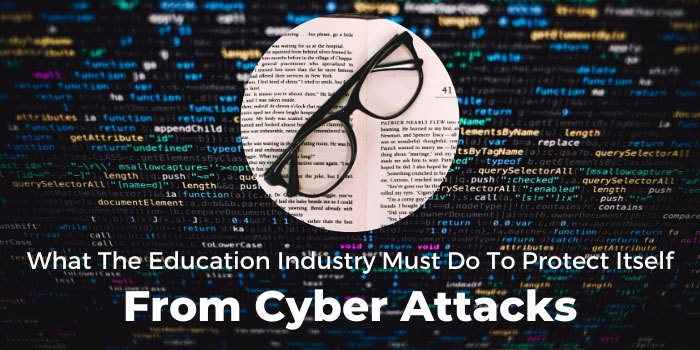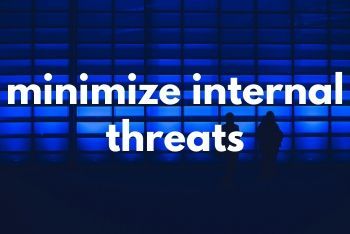Cybersecurity is a serious issue that somehow gets neglected by people and organizations all over the world. It seems like everybody believes to be perfectly safe against digital threats, but the truth is that a hacker attack occurs every 39 seconds in the US alone.
The situation is getting serious as entire industries are gradually adopting cloud technologies. The education sphere is not an exception here since the vast majority of schools and universities use online resources to improve learning experiences and administrative procedures.
In such circumstances, the question we should all ask is: What the education industry must do to protect itself from cyber attacks? Keep reading our post if you want to know the answer!

Do hackers really target academic institutions?
Before we explain the ways to protect the education industry against malware attacks, it is important to answer a question that we get to hear quite frequently these days: Do hackers really target academic institutions?
The simplest answer to this question is: Yes, they do.
Security breaches take place in all industries and there is no reason to believe schools are not in danger. In an education environment, attacks – which tend to spike at the beginning of every school year – range from flooding the network to stealing personal data. Hackers do it for two main reasons:
- Hoping for a financial gain
- Hoping to steal information
In most cases, cyber attacks can be stopped easily, but the number of incidents still keeps growing year on year. How come?
First of all, a lot of education systems don’t have a clear cybersecurity plan that can help them to react quickly and protect against possible attacks. Secondly, they lack the resources needed for immediate and decisive reactions. As a result, cyber attacks are more severe and damaging.
3 ways to protect education from hacker attacks
There are many ways to address cybersecurity issues and stop major incidents, but we need to be realistic and stick to the solution almost anyone can apply very soon. We made a list of the three most efficient mechanisms that can help education systems to fend off hackers. Here they are:

The first thing you need to do is to prepare and create an all-encompassing strategy to prevent possible security breaches. The plan has to cover every single aspect of the organizational hierarchy and apply it to all levels of the system.
Jake Gardner, a security specialist at Brill Assignment who writes custom research papers, says the plan should clearly define the following features:
- Actions and mechanisms to prevent cybersecurity issues
- Actions to be taken in case of security breaches
- Cybersecurity roles and accountability
If properly planned, the strategy can make the education system almost impenetrable.

Do you know that more than a third of cybersecurity breaches in 2018 involved an internal actor? It turns out that people from within are often to blame for data breaches, so you need to take it into account and act accordingly.
Many administration workers, teachers, and students bring their own devices to schools and colleges.
This is a big opportunity for hackers to jump in and misuse the vulnerabilities of individual users or devices. Another problem occurs when careless employees open suspicious attachments and browse insecure websites. It’s an amateur-level mistake, but it happens way too frequently.
What you can do about it is to organize cybersecurity training for all members of the education system. It doesn’t have to be too comprehensive, but you do have to cover the basics and prevent some of the most common problems.
For example, you can organize cybersecurity seminars during onboarding. It will help new employees to fit in easier and also to learn the fundamentals of digital protection systems.

The third idea is obvious, but many academic institutions still neglect it and fail to use the right (or any) antivirus platform. What you choose depends mostly on the nature and the scale of the system.
Educational organizations can have anywhere from dozens to thousands of members, so you need to find a program that can successfully protect the entire group of users. However, we can recommend you a few common options such as Bitdefender Antivirus, Webroot, Sophos, or Emsisoft Anti-Malware.
Conclusion
The Internet and other digital technologies changed almost every aspect of our daily lives in the last couple of decades. It affects every industry from sales to engineering, which means that the education sphere is by no means an exception.
Hackers attack schools, colleges, and other education-related institutions just like any other organization or company out there. This is why we decided to write about what the education industry must do to protect itself from cyber attacks.
Are you familiar with any cases of security breaches in academic institutions? Share your thoughts with us – we would love to discuss this very important topic!

Justin Osborne is a freelance writer who loves to share his thoughts and opinions about education, writing and blogging with other people on different blogs and forums.
Author // Justin Osborne

Thanks for sharing this. It is really useful.